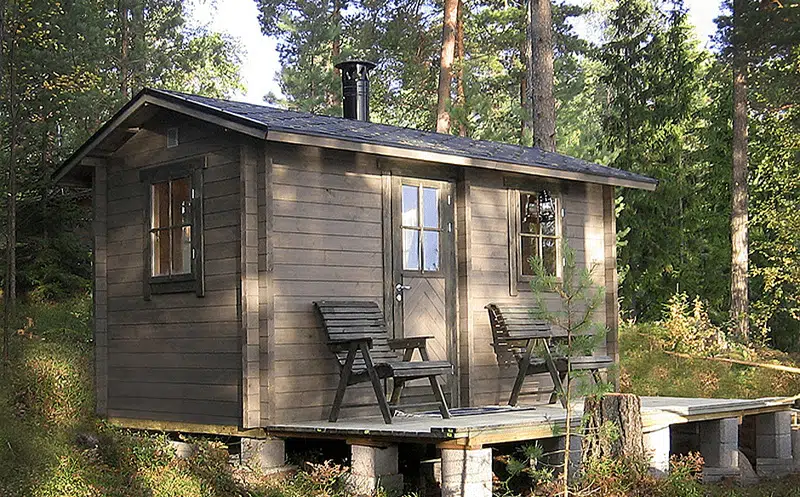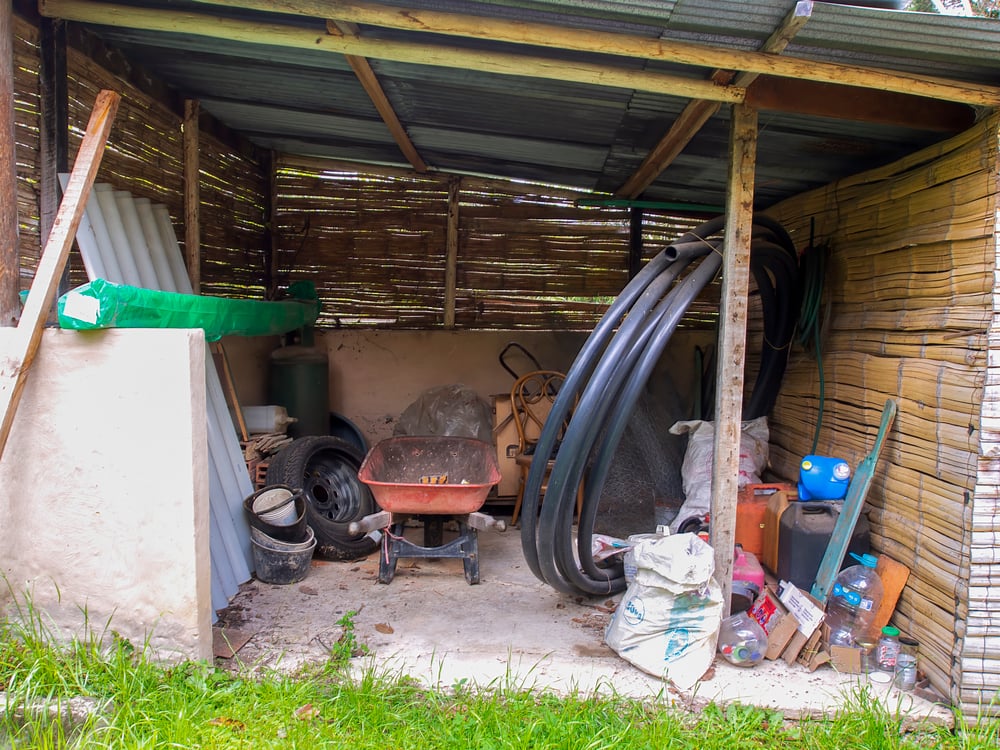How To Clean A Wooden Shed
21.11.2023

At Summer House 24 our guide on cleaning wooden sheds, both old and new, focuses on enhancing functionality, safety, and aesthetics. We walk you through comprehensive shed inspection, damage and condition assessments, tips on wood decay and structural integrity, general wear and tear check,s roof and foundation inspection, moisture and leak detection, and pest control methods take play, rust, weather impact, checks on insulation, doors, and windows, and more!
Prepare to explore storage options, ventilation, and airflow to prevent dampness, mold or pests, do repair prioritization and maintenance routines to ultimately enhance your shed’s longevity and durability.
Without further ado.
Assess Shed Condition
Key factors of longevity and functionality to assess shed condition:
- Examine structural integrity. Looking for damage, exterior paint wear tear, rotting wood, rusting metal, or compromised roofing.
- Check doors and windows to ensure they seal tight. Fill gaps that could allow moisture or pests to enter.
- Evaluate for signs of dampness, mold, or pest infestation, which indicate issues with waterproofing or ventilation.
- Inspect flooring stability and absence of rot or wood/other pests.
- Assess storage: shelving, cabinets, hooks, other storage.
- Factor paint, siding, rocky edges, and coziness.
If too bad, consider a new summer house!
Shed Cleaning: Plan & Prepare
Start with mental preparation by gearing yourself up to part with items no longer needed. Determine what you want to achieve with this clean-up? Whether it’s creating more working space, improving accessibility, or simply making your shed more aesthetically pleasing, break it down into hourly steps to make the task less daunting.
- Assess inventorying shed contents.
- Take stock of what’s inside your shed.
- Categorize based on utility and frequency of use.
- Guide your cleaning process based on this inventory.
Lastly, effective scheduling and time management are KEY. Allocate time for a cleaning project and break down chores into manageable chunks for a systematic and thorough cleaning process.
—
Navigating Shed Condition Assessment
A cornerstone of shed longevity and functionality is a thorough condition assessment. This involves examining the shed’s structural integrity for any signs of damage, such as exterior paint wear, wood rot, rusting metal fixtures, or compromised roofing materials. Ensuring doors and windows are securely sealed to prevent moisture or pests from entering is crucial. Signs of dampness, mold, or pest infestation highlight the need for improved waterproofing or ventilation. The stability of the flooring and the condition of the storage solutions inside the shed also warrant attention.
Strategic Shed Cleaning and Organisation

The process of shed cleaning begins with a mental preparation for decluttering, aiming to part with items that no longer serve a purpose. This task, whether aimed at creating more workspace, enhancing accessibility, or simply beautifying your shed, should be approached methodically, broken down into manageable steps.
Inventorying the contents of your shed allows for a categorisation based on utility and frequency of use, guiding the decluttering and cleaning process. Effective scheduling and time management are paramount, enabling a structured approach to this endeavour.
Decluttering Your Space

The art of shed decluttering demands a mental and physical overhaul, evaluating each item’s necessity and utility. Shed decluttering involves a mental shift first, note cleaning professionals Cleaning Day. Employing mental strategies, such as imagining the need to relocate or confront a loss, can help in discerning the essentials from the expendable.
- Mentally prepare yourself by incubating what, how and why some time in advance.
- Try mental tricks like imagining a cross-country move or a hypothetical scenario where you’ve lost everything in a fire to determine what’s truly essential.
- Understand the ‘cost of ownership’ in terms of space and maintenance.
Sort items into four categories:
- Regularly used / essential (‘must keep’),
- those that are no longer functional / needed (‘throw away’),
- items that are in good condition / barely used (‘give away or sell’)
- items you’re unsure about (‘probation’).
By doing so, you clear out unnecessary clutter, making way for a more organized and functional shed.
How to Declutter Garden Storage Sheds – Easy and Quick Ways?
Deep Cleaning Insights
Deep cleaning your shed, covering both interior and exterior aspects, is vital for its upkeep. Interior cleaning focuses on dust, debris removal, and mold treatment, while exterior cleaning involves washing down walls and addressing any mildew or staining. Such thorough cleaning not only preserves the appearance and structure of your shed but significantly extends its life

Cleaning Shed Interior:
- Sweep and vacuum to remove dust, cobwebs, and debris with special attention to corners and hard-to-reach areas.
- If you encounter mould, treat it with a mixture of bleach or vinegar and warm water.
- For stubborn dirt and grime, scrub with high-grade cleaners if necessary.
- Consider mopping or hosing down the floor for a more thorough clean, ensuring proper drying afterward to prevent moisture buildup.
Cleaning Shed Exterior:
- Rinse walls with a high-pressure washer or try your regular garden hose.
- Prepare a suitable cleaning solution (a mix of water and vinegar can be effective, especially for vinyl siding).
- Apply with a long-handled scrub brush, ensuring even coverage and focusing on areas with mildew or heavy staining.
- Rinse thoroughly. If there are persistent mildew spots, use a commercial mildew remover, taking necessary safety precautions.
Regular deep cleaning not only maintains shed appearance and structural integrity, but literally extends its lifespan.
Additional guides:
Organise Tools & Equipment

Tips to put tooling in place:
- Zone space into dedicated areas for different types of items, such as garden tools, hardware, and other equipment. Zoning not only streamlines finding what you need but also helps to maintain order.
- Utilize storage bins, wall-mounted pegboards and magnetic strips for easy access and visibility of hand tools.
- Regularly reorganize and reassess your storage setup to adapt to changing needs and ensure optimal use of available floor and wall space.
- Install shelving units and cabinets for larger equipment, ensuring everything has a designated spot.
- Consider using labeled bins or drawers for small parts and accessories.
- Look into vertical storage solutions, like overhead racks, can maximize floor space, making your shed feel more spacious and navigable.
How to Organize and Declutter Your Garden Shed?
Maximize Space Where Possible!
Utilize vertical space and overhead storage to expand storage capacity. Installing high shelves or overhead racks can be a game-changer offering you additional storage for items infrequently used.This approach keeps the floor space clear, making the shed feel more spacious and easier to navigate.

When organizing items, categorize them based on frequency of use.
- Place frequently used items at eye level or within easy reach, and store seasonal or rarely used items in the higher or more remote storage areas.
- Reevaluate storage setup and adjust as necessary.
Remember, the key to effective shed organization is not just about fitting everything in but doing so in a way that maintains accessibility, functionality, and order.
Pest Control & Weatherproofing
Given the recent weather challenges in the UK, such as unprecedented rainfall and temperature fluctuations, the importance of weatherproofing cannot be overstated. Regular pest control, moisture management, and structural inspections are essential in safeguarding your shed from the elements and ensuring it remains a durable, functional, and aesthetically pleasing outdoor asset.

Regular inspections help in early detection of these pests, looking out for signs such as droppings, nesting materials, or structural damage.
- Employ natural pest control methods for a safer, less invasive approach like peppermint oil for rodents or diatomaceous earth for insects.
- Resort to chemical methods like rodenticides or insecticides in cases of severe infestations. Ensure they are used safely and in accordance with manufacturer guidelines.
Preventative measures are KEY! Maintain hygiene, reduce clutter, seal cracks or openings to deter pests from entering. Storing items in sealed containers, especially food or seeds, further reduces the risk of attracting pests.
Seasonal Shed Maintenance

Each season brings specific challenges, so adapting your maintenance tasks accordingly ensures your shed remains in optimal condition throughout the year.
- Winter, focus on weatherproofing! Check and repair any leaks, insulate if necessary, and ensure that doors and windows are sealing properly to keep out cold and moisture.
- Before summer, prioritize ventilation to prevent overheating and humidity buildup, which can lead to mold and mildew.
- In spring, conduct a thorough cleaning and decluttering, checking for any damage caused by winter weather.
- Autumn is the ideal time for exterior maintenance, such as painting or staining, to protect against the harsher winter conditions.
Additionally, clear gutters and drainage areas around the shed to prevent water accumulation.
Notes
Maintaining a wooden shed involves a balanced approach of assessment, cleaning, organization, and repair. Regular inspections, decluttering, deep cleaning, and efficient organization are key to its upkeep. Addressing repairs, seasonal maintenance, and pest control are crucial for longevity. Safety and health should always be prioritized.
Follow SummerHouse24 guidelines and ensure your shed remains a functional and attractive part of your property!
Explore the rest of our blog! For orders, questions, and advice, contact us and get in touch.

Want to discuss over phone. Let us call back to you
If you need any additional info regarding any product, please fill in the below form and we will get back to you, usually the same or next working day.
Have any questions regarding some product?
If you need any additional info regarding any product, please send us your questions.



